
Dr. Bindi's main research topics are the study of dark matter, cosmic rays, solar modulation of cosmic rays, solar energetic particles, and space radiation for future manned missions to the Moon and Mars. She graduated in astronomy and got her PhD in Physics at the University of Bologna in Italy. From 2002 at the INFN (Italian National Institute for Nuclear research), based at CERN (European Organization for Nuclear Research) in Switzerland, she has been part of the team that constructed and integrated the Alpha Magnetic Spectrometer (AMS) instrument, which has been in operation on the International Space Station since 2011.
Since 2012, Dr. Bindi has been a Professor in the Physics Department of the University of Hawaii at Manoa (UHM). Her group, composed of post docs, research assistants, and several undergraduate students, is involved in the data analysis of the AMS instrument. The current analysis topic is solar modulation of cosmic rays and the study of solar energetic particles with AMS-02. She is the PI of a long-term grant with NASA and she received an NSF (National Science Foundation) career award. She has published several papers in peer reviewed journals, she has been invited as a keynote speaker in several international conferences, and she is the organizer of an annual international workshop that brings together major world experts in her fields. In 2019, Dr. Bindi was working in the Heliophysics and Strategic Integration and Management Divisions at NASA Headquarters in Washington DC.
Dr. Bindi teaches calculus-based physics to engineering and science majors. As a member of several committees, she is working to improve the physics curriculum and learning outcomes at UHM, and to implement new methods for recruitment of physics majors.
Dr. Bindi is dedicated to increasing engagement in STEM (Science, Technology, Engineering and Math) fields.
Dr. Bindi has participated in multiple outreach activities for middle and high school students as a lecturer and organizer. She is the Quarknet mentor in Hawaii and a TED educator (Her TED animation about cosmic rays is available online). Since 2015 she has been a scientific partner for ARTS@CERN and inspiring partner for the visiting artists Fragment.In. In spring 2016, at the Lorenzo de Medici Institute in Florence (Italy), as resident director for study abroad, she designed and taught a course that provides a wonderful insight into how science and art are deeply interconnected.
bindi [at] hawaii [dot] edu
website: www.veronicabindi.com
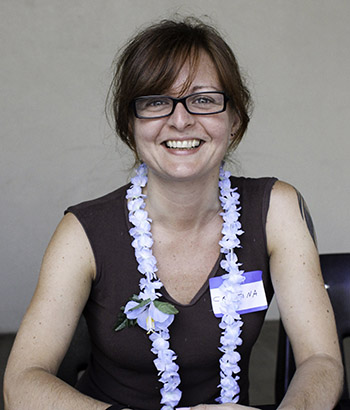
Since 2013, Cristina is a Post-Doc at the University of Hawaii.
She graduated in Physics at the Universita' Degli Studi di Milano and did her master degree thesis on the Polarization of the Cosmic Microwave Background in 2005. From 2005 to 2006 she had a fellowship with ST-Microelectronics and INFN-Milano Bicocca to work on space radiation damage qualification for semiconductors devices.
From 2006 to 2009 she was a PhD student at Universita' degli Studi di Milano Bicocca and has her doctorate degree in physics and astronomy on the displacement damage induced by cosmic rays in silicon devices using GEANT4 toolkit for space applications. During this period she was working at CERN where she became a collaborator of the GEANT4 group for developing the Coulomb scattering model.
From 2009 to 2012 she was working at Universita' degli Studi di Milano Bicocca on the study of the sun modulation effects on cosmic ray fluxes observed by the AMS-02 experiment and on the study of radiation hardness components for astrophysics and space physics applications. In 2011, she was part of the team at the Johnson Space Center during the installation on the ISS of AMS-02.
Since 2013, she is working for the University of Hawaii AMS- group as a post. doc. She is one of the coordinators of the AMS low-energy group at CERN, fully working on the proton and helium time variation fluxes. She gave a major contribution to the AMS analysis in the PRL papers publish in 2018, 2021 and 2022 on the monthly and daily proton and helium fluxes. She is currently working on the Solar Energetic Particle analysis.
cconsola [at] hawaii [dot] edu

Claudio Corti is a Post-Doc at the University of Hawaii.
Claudio completed a B.S. in General Physics (2009) and a M.S. in Particle Physics (2012) from Pisa University (Italy).
He got his PhD in July 2017 in Astroparticle Physics with Prof. Veronica Bindi at University of Hawaii. During the five years as a graduate student he helped in writing grants and setting up the AMS-02 computer farm at University of Hawaii and he participated in numerous outreach activities for middle and high school students in Oahu and Maui, collaborating with school teachers and education specialists.
For his PhD thesis, he contributed to the AMS-02 data analysis for the time variation of proton fluxes, focusing on the study of the energy losses in the detector, the errors in the AMS electronics due to radiation damages and the unfolding of the flux.
He also spent three months at the North-West University in South Africa, where he studied the theory of solar modulation of cosmic rays with Prof. Marius Potgieter, developing a numerical code for the propagation of cosmic rays in the heliosphere.
He enriched his education by attending PhD summer schools in Europe (ESHEP, ISAPP, ISCRA) and the NASA Space Radiation Summer School at Brookhaven National Laboratory.
corti [at] hawaii [dot] edu
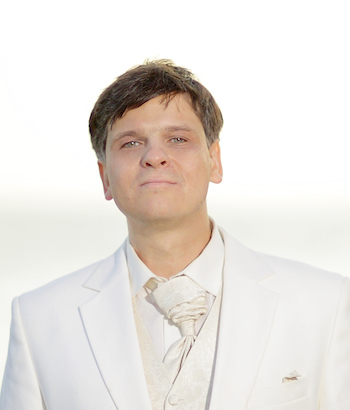
Dr. Nikonov joined our team in February 2023.
He graduated in Physics at Peter the Great St-Petersburg Polytechnic University (Russia) in 2004 and did his master thesis on cosmic ray particle detectors. During his internship in 2003 he started his work at Ioffe Physical Technical Institute, developing software for GEANT4 simulations of neutron detector, installed on PAMELA instrument.
Together with colleagues from University of Bari Aldo Moro, he worked on developing PamVMC, a simulation tool for whole PAMELA detector, later used by collaboration for evaluation of the acceptances, efficiencies, systematics, background estimation and statistical unfolding of measured cosmic ray fluxes.
In 2009 he became PhD student at University of Rome Tor Vergata (Italy), where he continued development and support of PamVMC code. His thesis is dedicated to galactic and solar cosmic ray helium fluxes in
80 MeV/n – 600 GeV/n energy range, measured with PAMELA experiment. Before defending PhD, he completed International Program at RIKEN Institute Tokyo, working on code optimization for JEM-EUSO experiment.
After graduation in 2012, Dr. Nikonov joined AMS-02 collaboration at Karlsruhe Institute of Technology (Germany), working on AMS-02 Transition Radiation Detector (TRD) housekeeping and performance studies, and analysis of electron fluxes. Since 2015 he continued to work at RWTH Aachen (Germany) on helium cosmic ray flux, measured with AMS-02 instrument.
At the moment Dr. Nikonov is working on studies of galactic and solar cosmic ray flux variations, Solar Energetic Particles, Forbush decreases, measured with AMS-02 instrument and neutron monitors. To achieve this goal, an extensive simulations of cosmic ray interactions with Earth atmosphere and materials of detector as well as instrument electronics response are required. Dr. Nikonov is involved in HLEA and Thimon neutron monitors redeployment at the summit of Haleakala, where favorable geographic location and low atmospheric density facilitates Solar Neutron Particles detection. Together with Dr. Bindi he is working on setup of Space Weather Control Center on the UH Manoa campus, which will help us better predict and understand weather in space and provide a scene for outreach events.
nikonov [at] hawaii [dot] edu
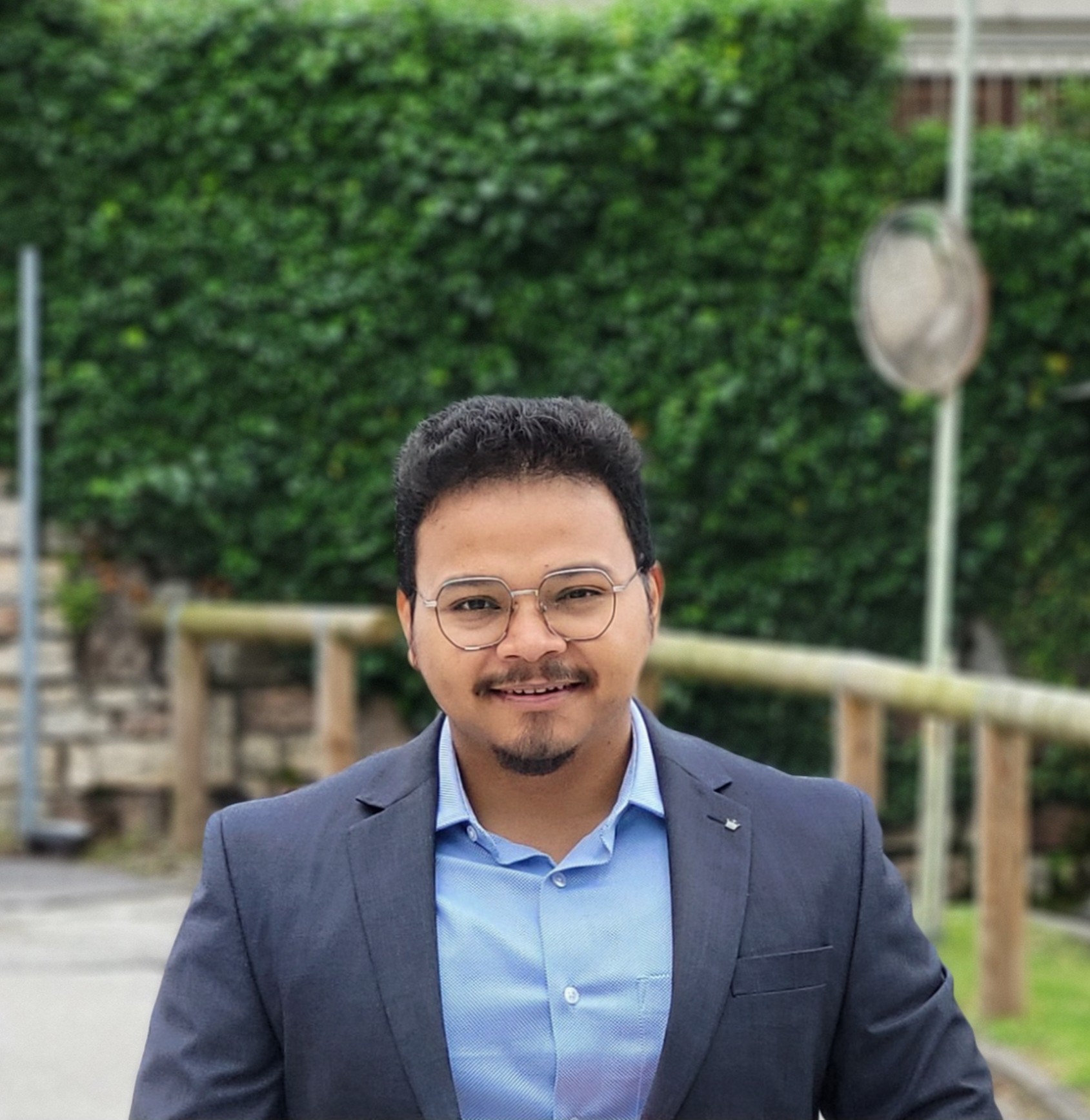
Abhinandan earned his Ph.D. in Astroparticle & Particle Physics in June 2024 under the supervision of Prof. Paolo Zuccon and Dr. Francesco Dimiccoli at the University of Trento. During his doctoral studies, he was affiliated with two CERN collaborations—AMS-02 and AMBER. His thesis focused on reducing astrophysical and nuclear uncertainties in dark matter interpretation through the anti-proton channel of cosmic rays. He contributed to AMS-02 data analysis, calculating beryllium isotopic ratios and fluxes, and performed Monte Carlo simulations for the AMBER RICH detector. He also regularly conducted detector shifts at CERN for both collaborations.
In September 2024, Abhinandan joined the Low-Energy AMS-02 group led by Prof. Veronica
Bindi, where he is working on modeling the heliospheric propagation of cosmic rays to improve
space weather predictions.
dassabhi [at] hawaii [dot] edu
Students
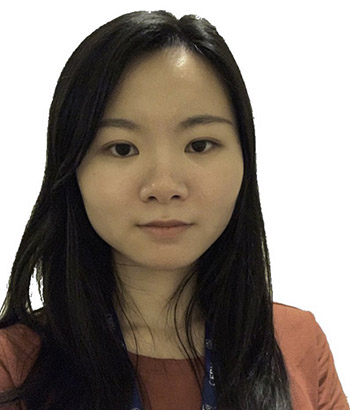
Siqi Wang is a physics graduate student at the University of Hawaii at Manoa since Spring 2018.
She received her B.S. in physics from Wuhan University in China in July 2017.
Siqi is working on AMS analysis, under the supervision of Prof. Bindi and is pursuing a physics PhD degree.
siqiwang [at] hawaii [dot] edu
Former Collaborators
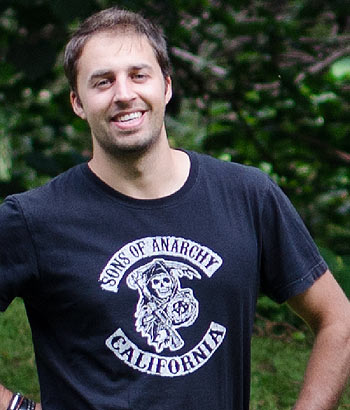
Matteo Palermo was a Post-Doc at the University of Hawaii at Manoa.
He studied Physics at the University of Perugia (Italy) where he completed the B.S in early 2009. He also got the Master degree in particle Physics in 2011 at the University of Perugia. During the Master, he performed a study on the Silicon Tracker efficiencies for the AMS-02 experiment.
From February 2012 to June 2016, he worked as a PhD student at the Max-Planck-Institute for Physics, Munich (Germany). During the latter period, he worked on germanium detector development for future generation experiments in the framework of low-background Physics. Specifically, his research was oriented to neutrinoless double-beta decay searches. Moreover, he designed and performed a brand new experiment, still operative, to measure muon-induced neutrons: the Muon-Induced Neutrons Indirect Detection EXperiment (MINIDEX). The MINIDEX run-I data were used to validate Monte Carlo studies. He received his Ph.D in particle Physics at the Ludwig-Maximilians-Universität in Munich.
In November 2016 he joined the Low-Energy AMS-02 group of Prof. V. Bindi, working on time-variation studies of galactic cosmic rays.

Xi was a Post-Doc at the University of Hawaii at Manoa, after receiving his Ph.D. in Physics at the Florida Institute of Technology.
He worked with the group at University of Hawaii, focusing on galactic cosmic ray (GCR) and solar modulation.
His current research focuses on leveraging unique cosmic ray precision data from the AMS-02 experiment, for investigating solar modulation effects on galactic cosmic rays (GCR) and developing precise numerical models independently. Through numerical models, he aims to understand the physical mechanism beneath the GCR solar modulation, and quantitatively assess the interplanetary particle radiation dose induced by GCR.
He was awarded the Shandong Provincial "Taishan Scholars Young Expert" in 2021. He is currently a researcher at the Shandong Institute of Advanced Technology, China
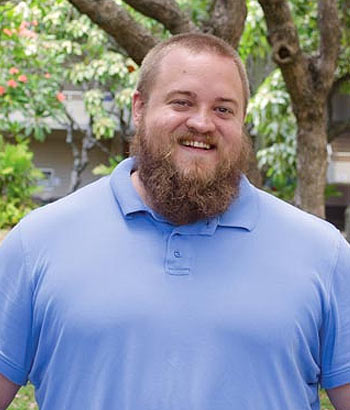
Chris Light was a graduate student in the University of Hawaii at Manoa physics department.
He earned a B.S. degree in physics from the University of Idaho and worked on a PhD in physics with Dr. Bindi.
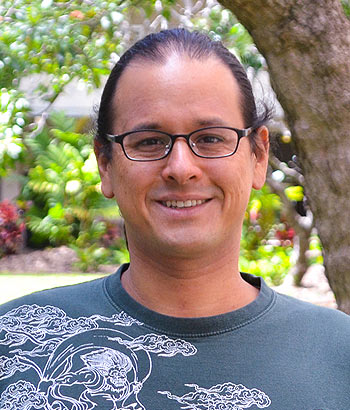
Christopher Freeman was a physics graduate student at the University of Hawaii at Manoa.

Alexandria (Lexie) Holthaus was a physics graduate student at the University of Hawaii at Manoa who started in Fall 2020, after finishing her B.S. in Astrophysics from UHM in Spring 2020.
Lexie was working on an analysis of Neutron Monitor (NM) yield function using AMS and NM data, under the supervision of Prof. Bindi and is pursuing a Physics MS degree.
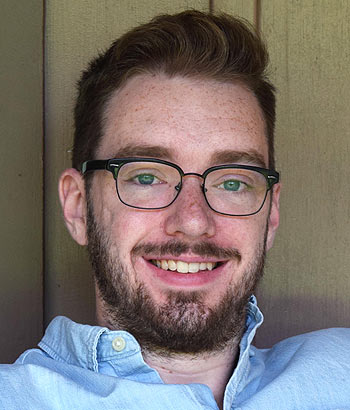
Andrew Kuhlman was a physics graduate student at the University of Hawaii at Manoa. He received a B.S. in physics and a B.A. in chemistry from Syracuse University in Syracuse, NY.
